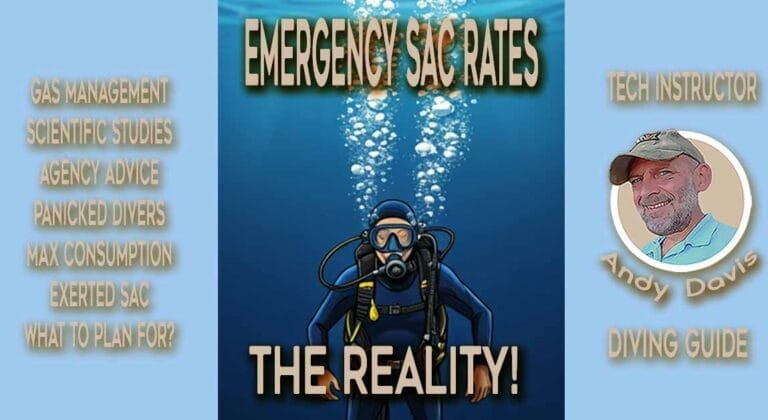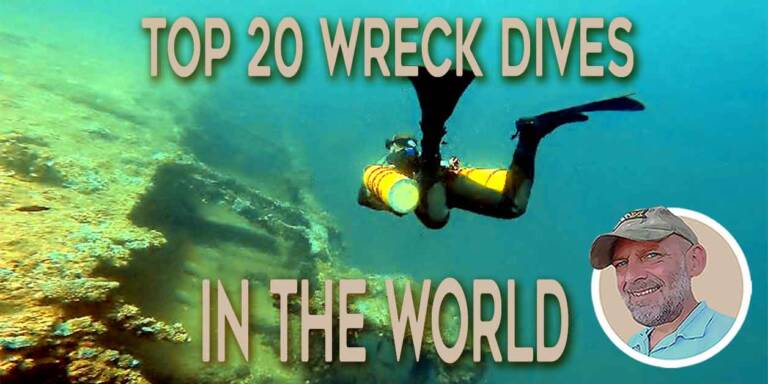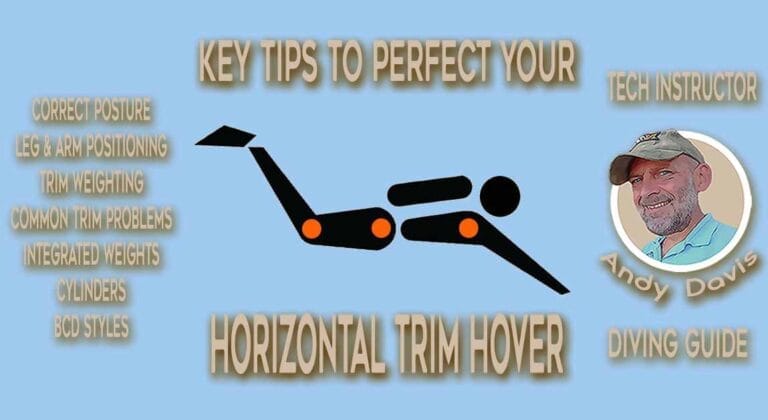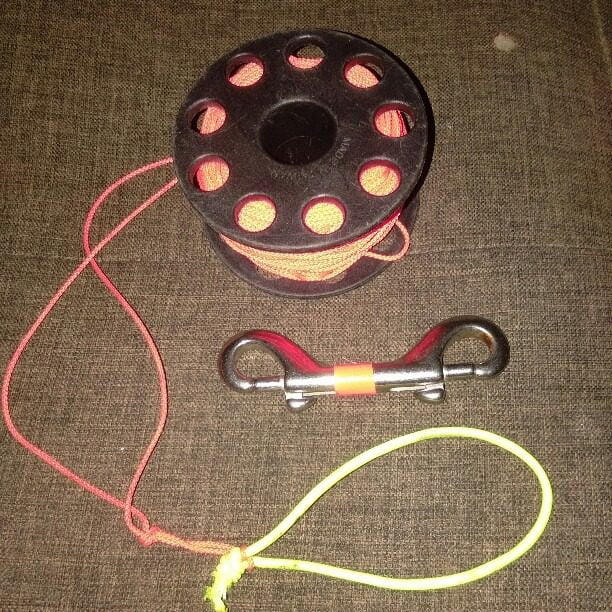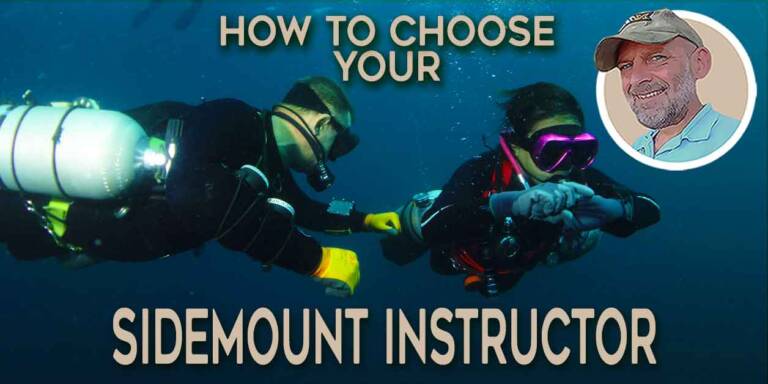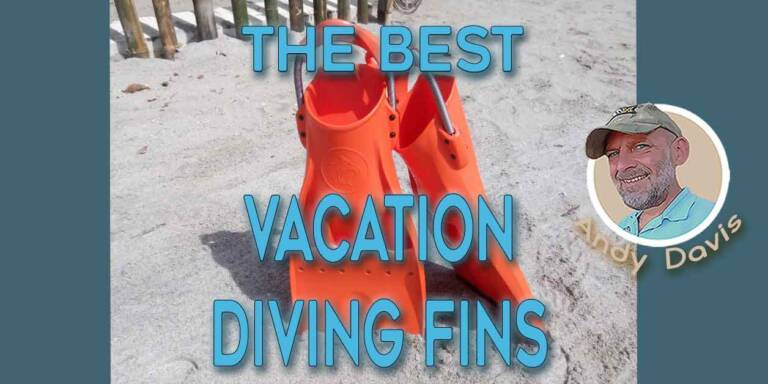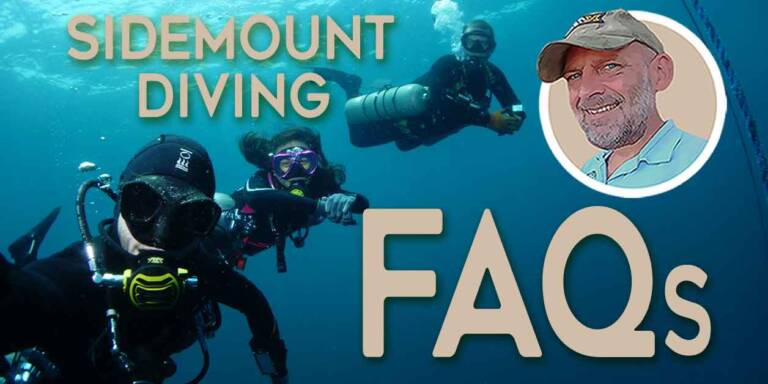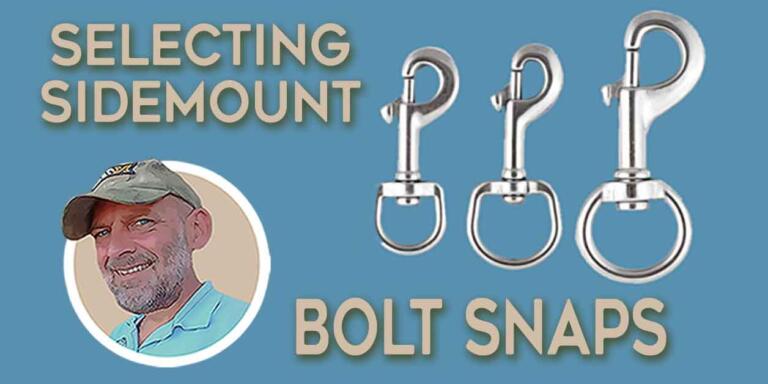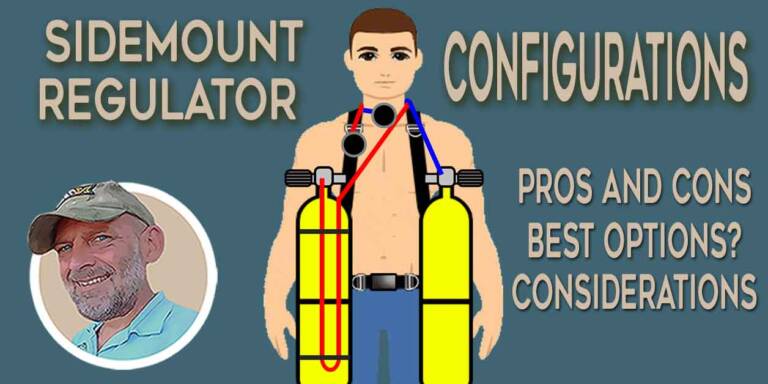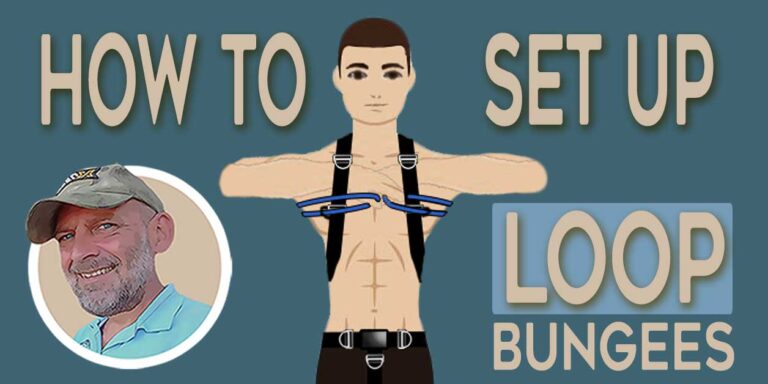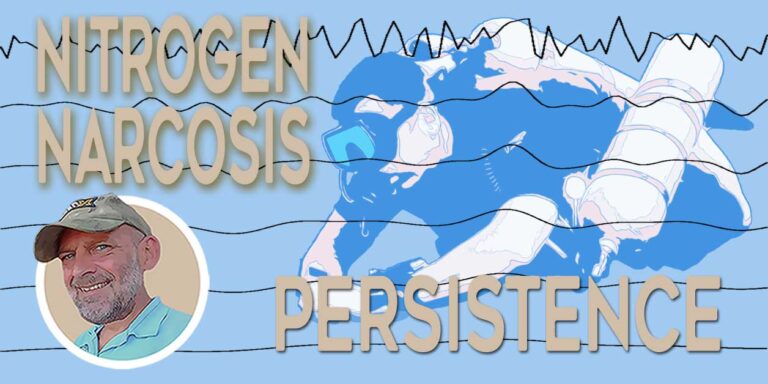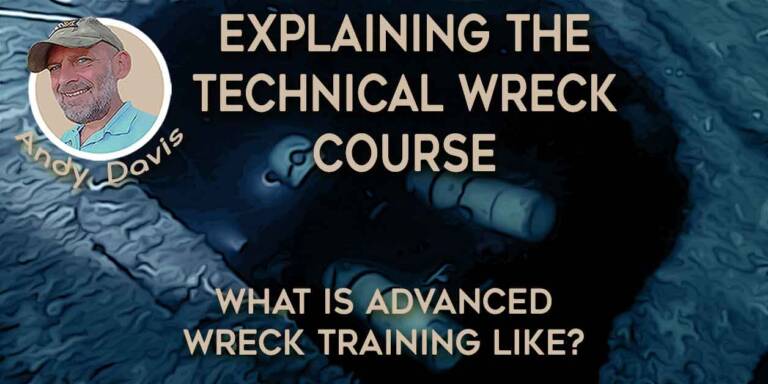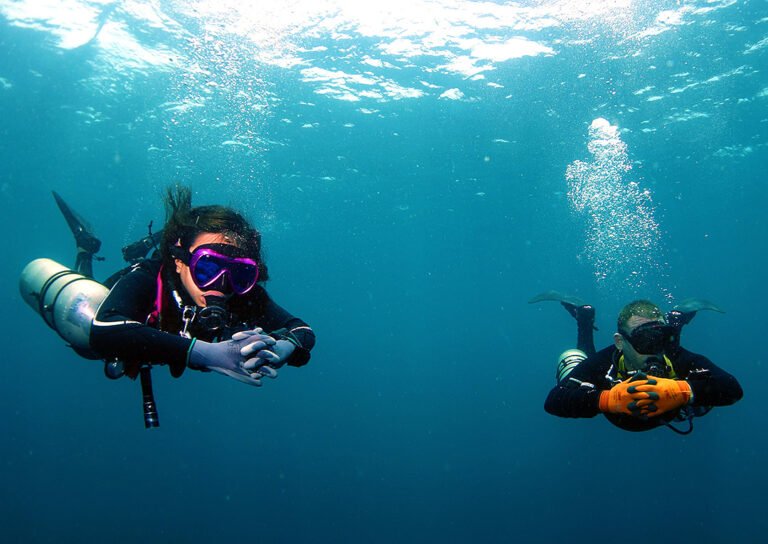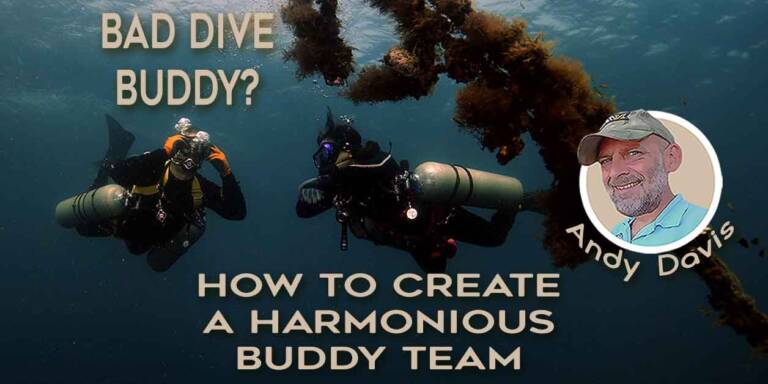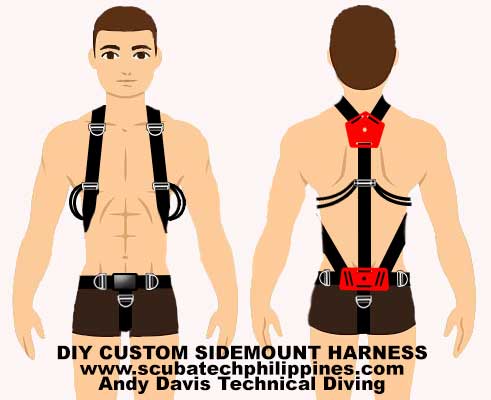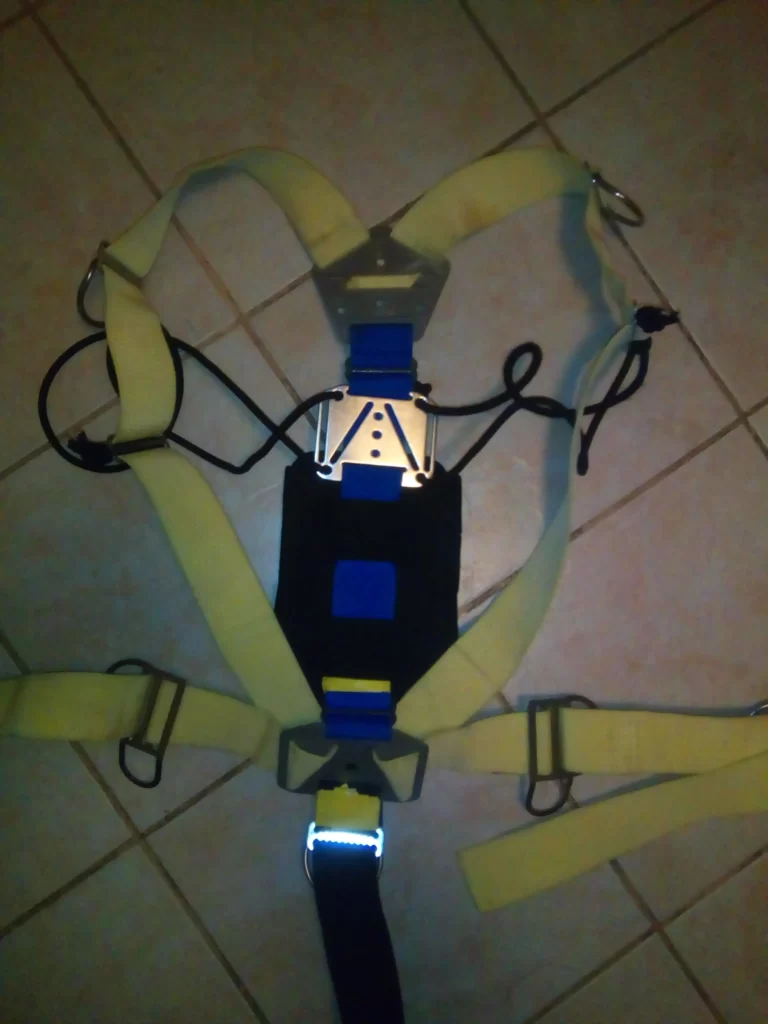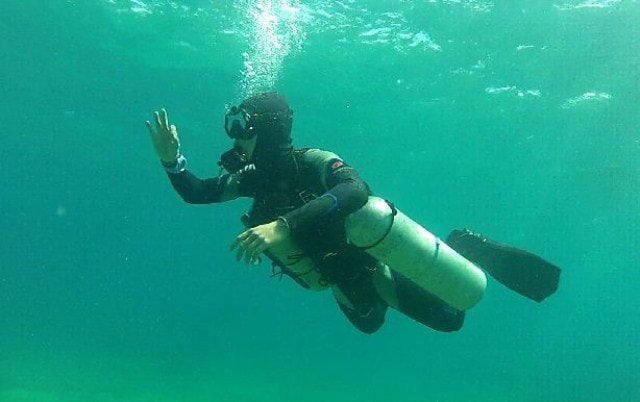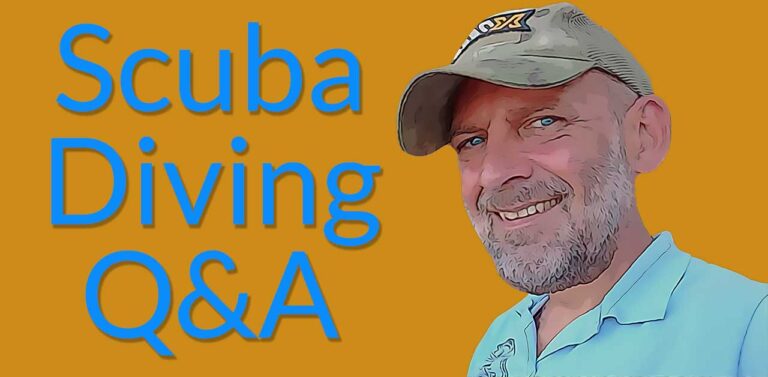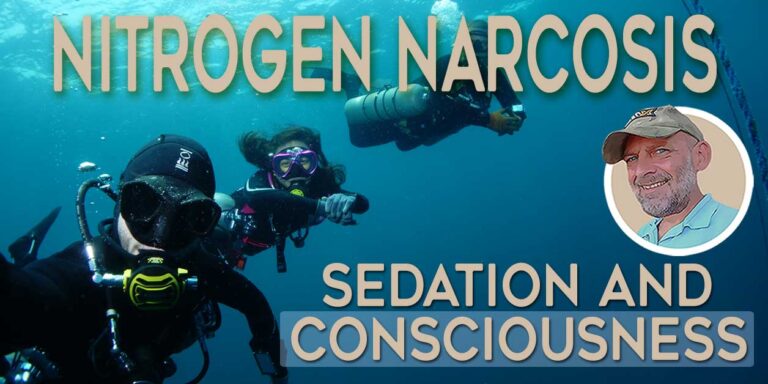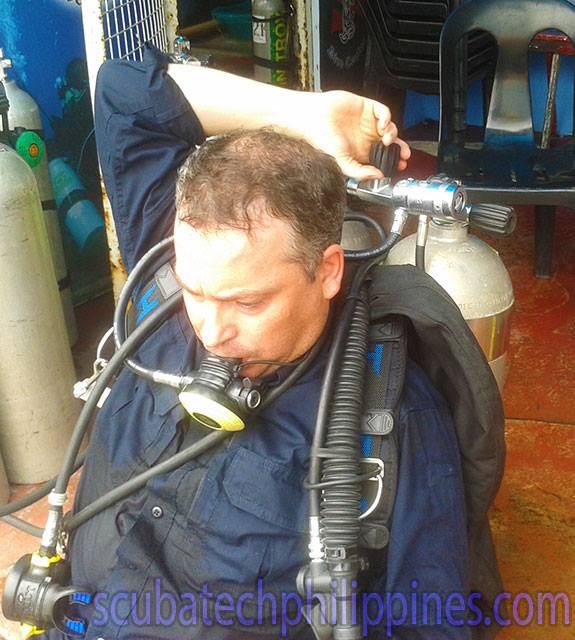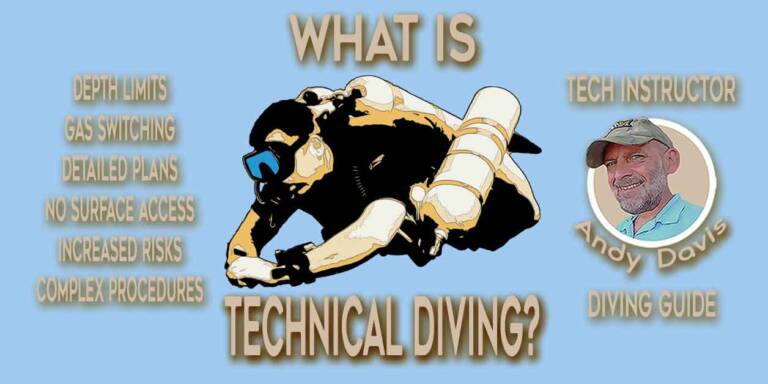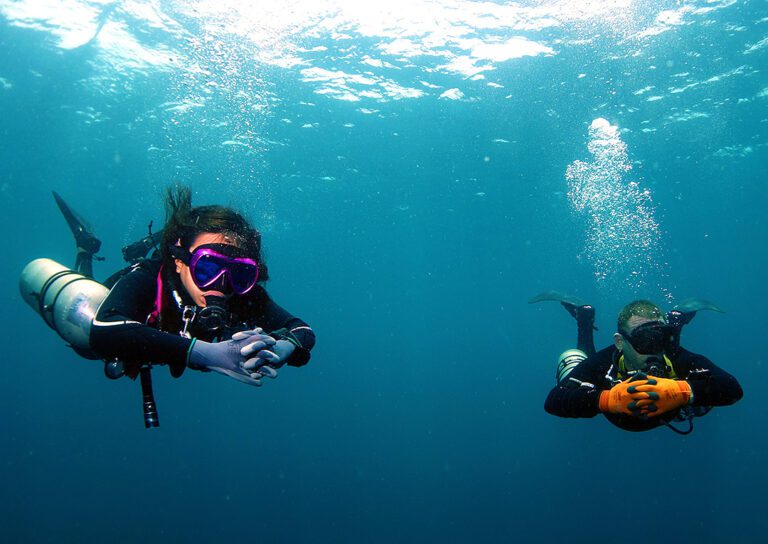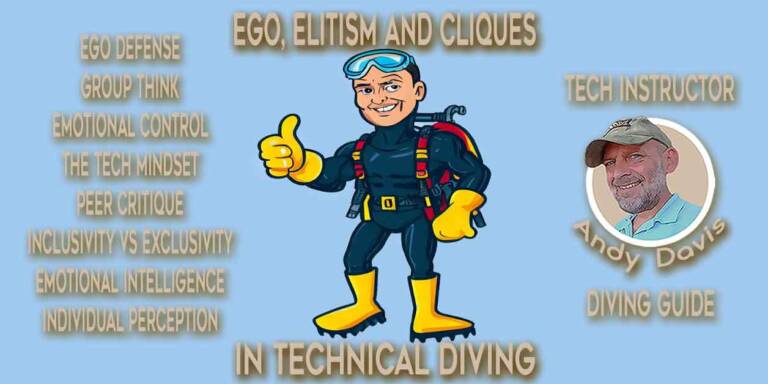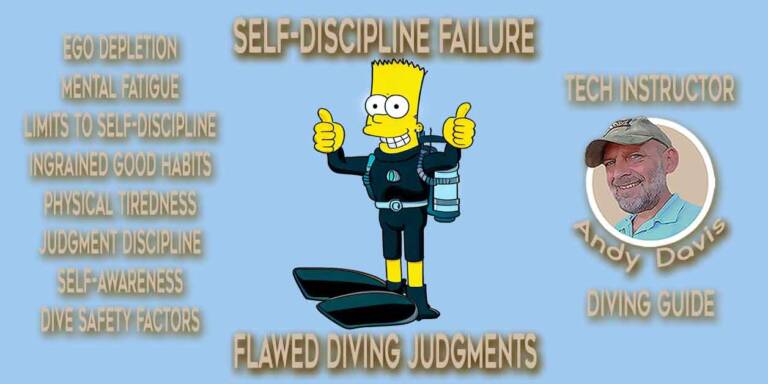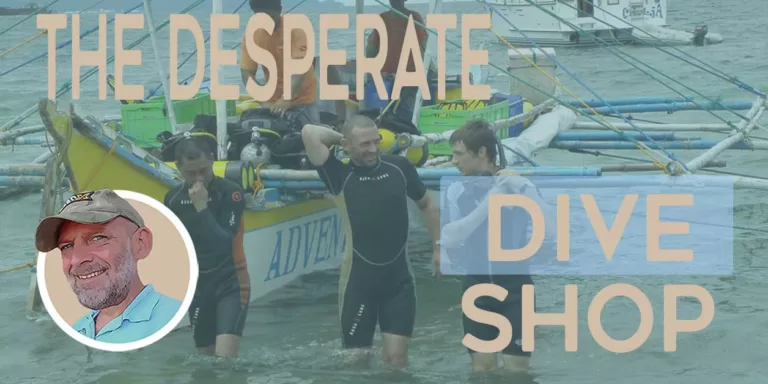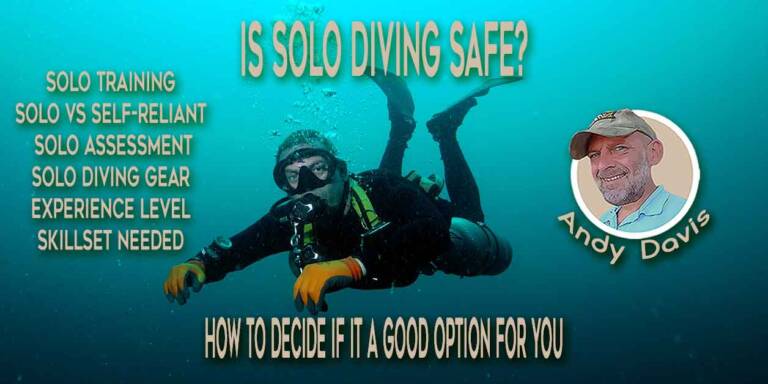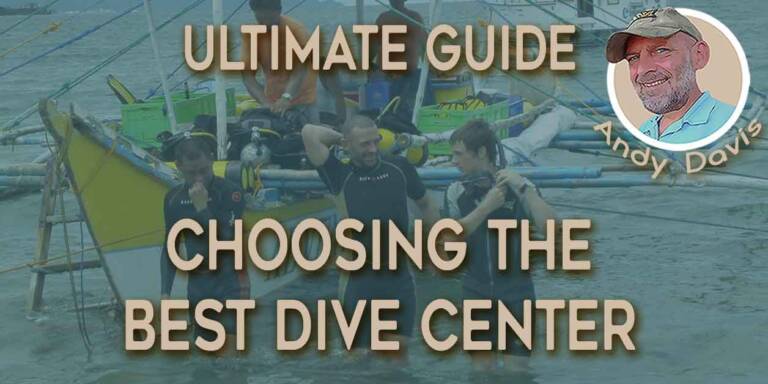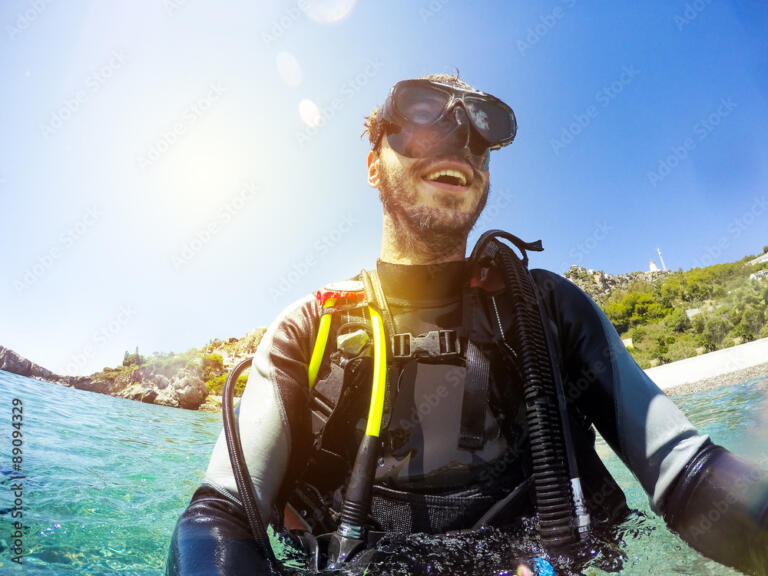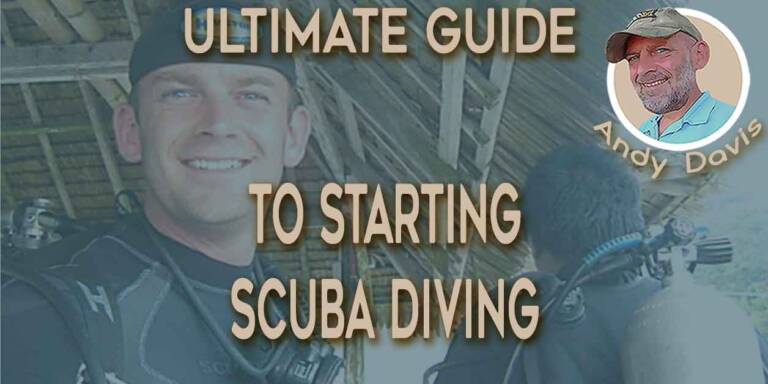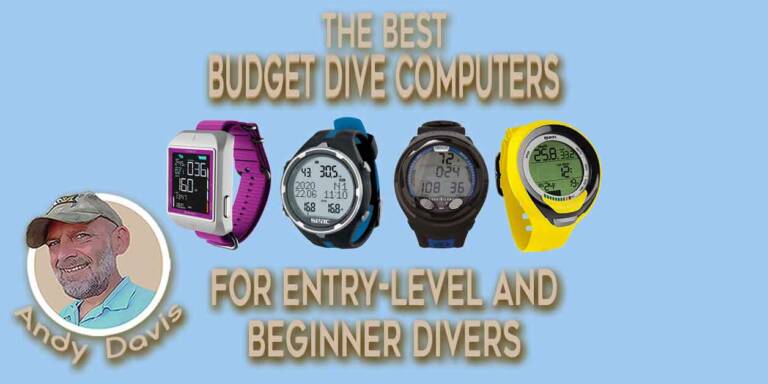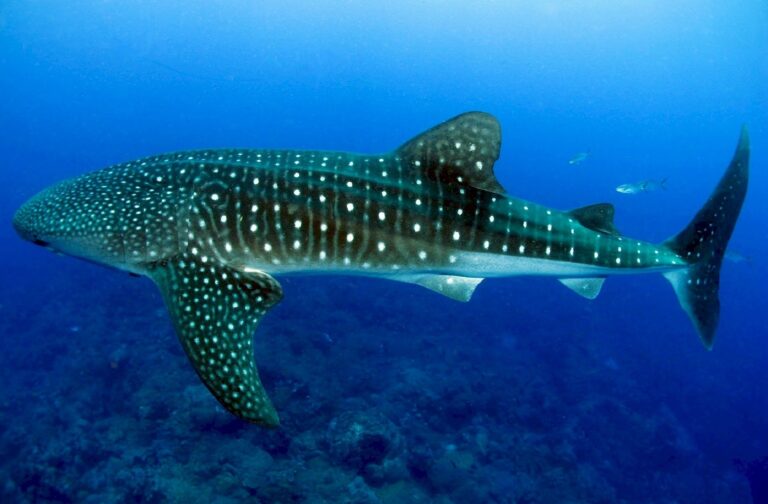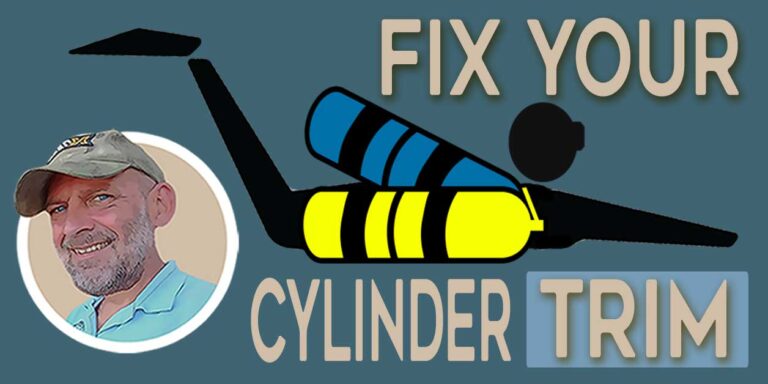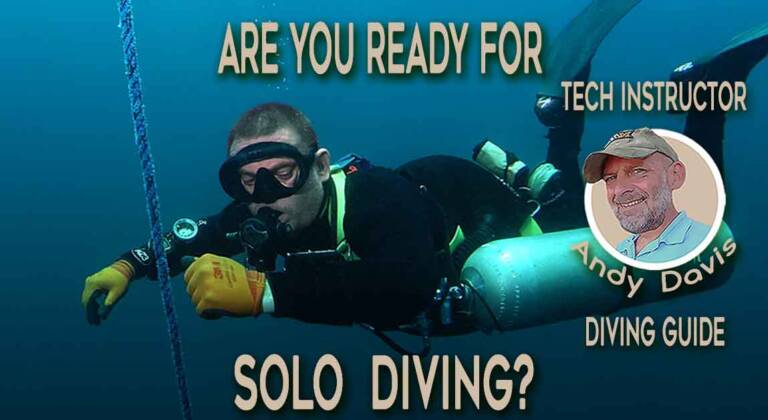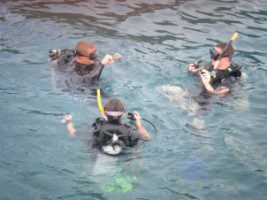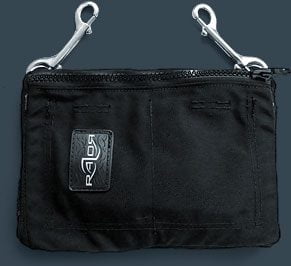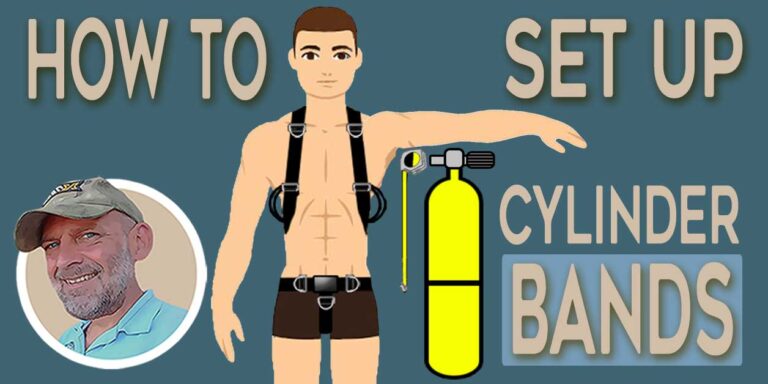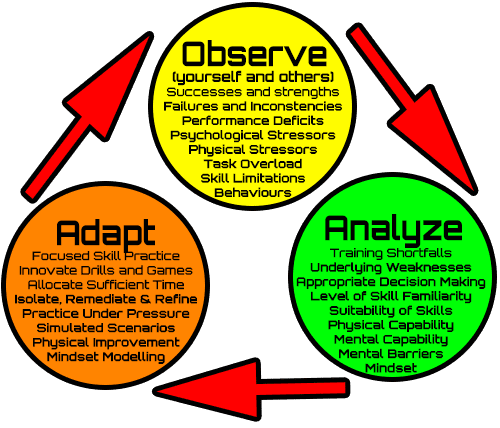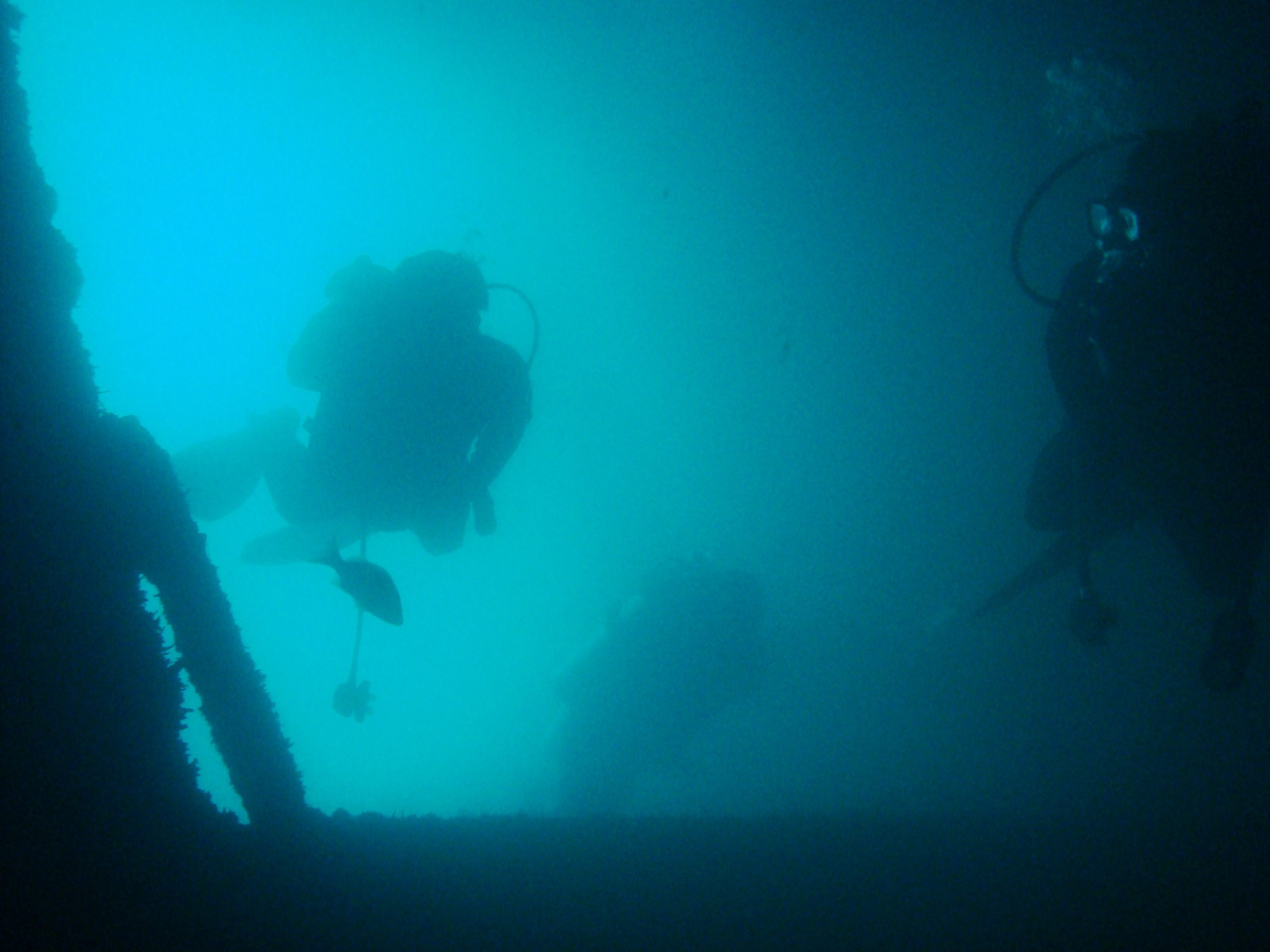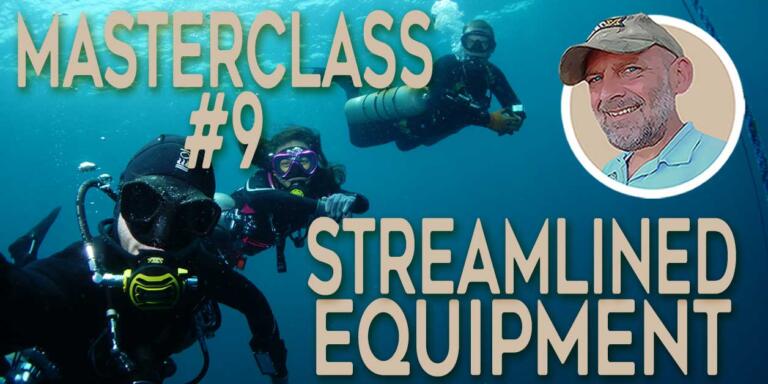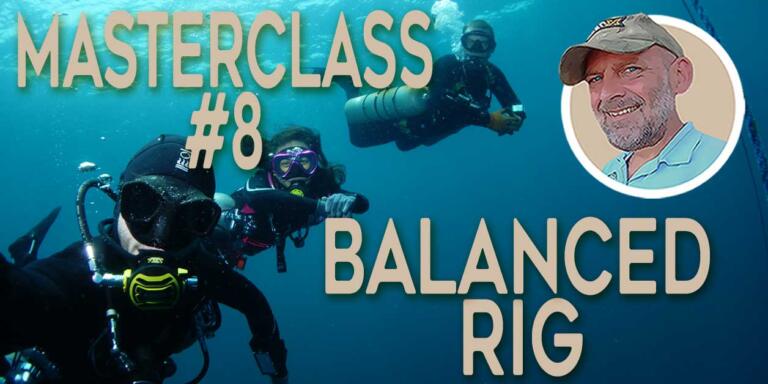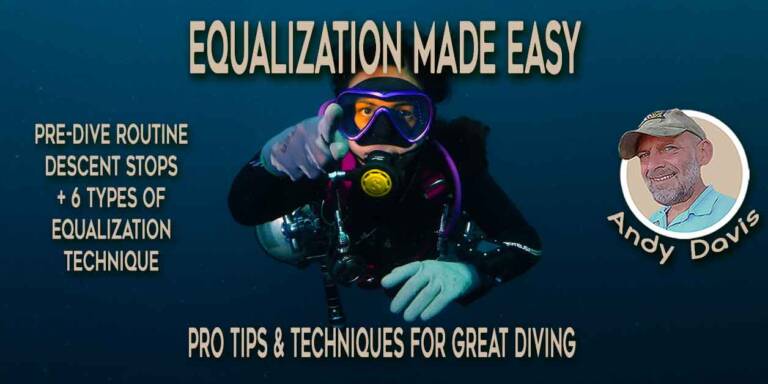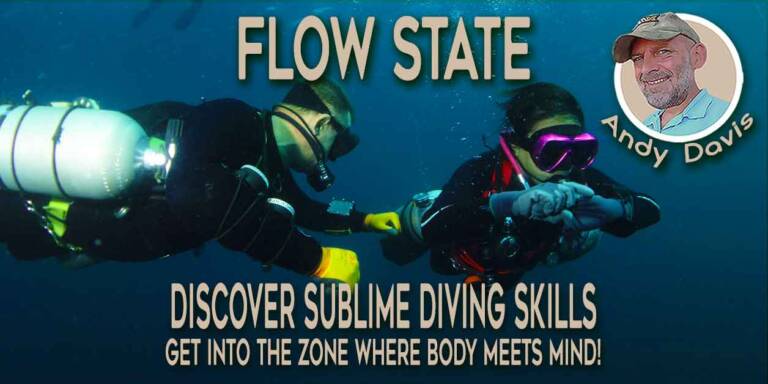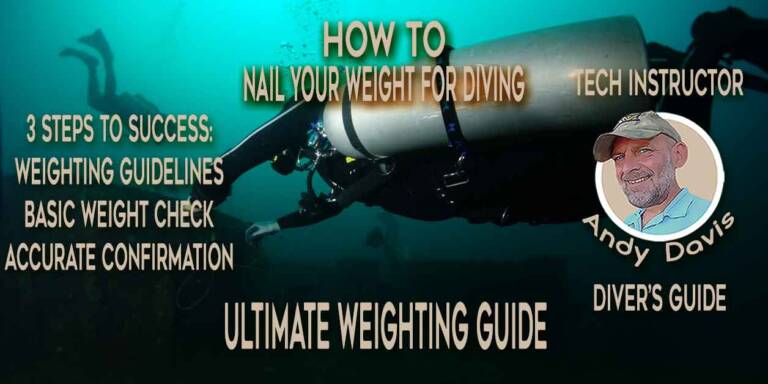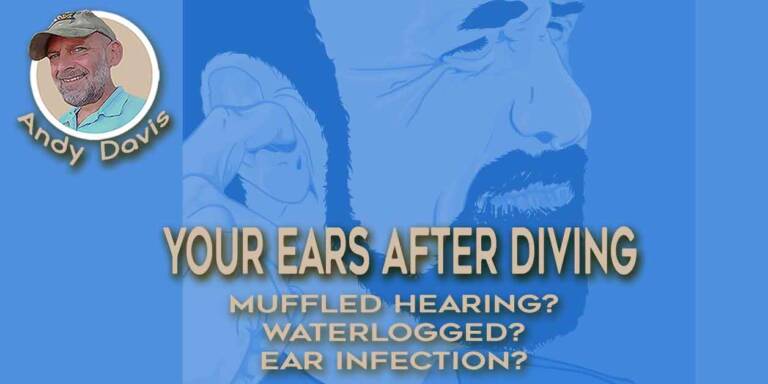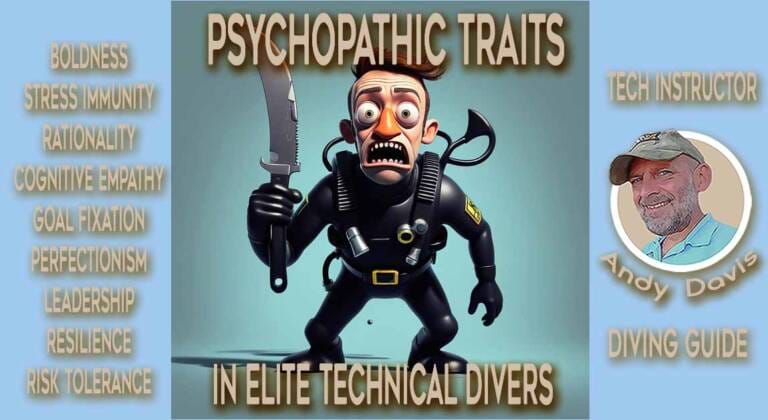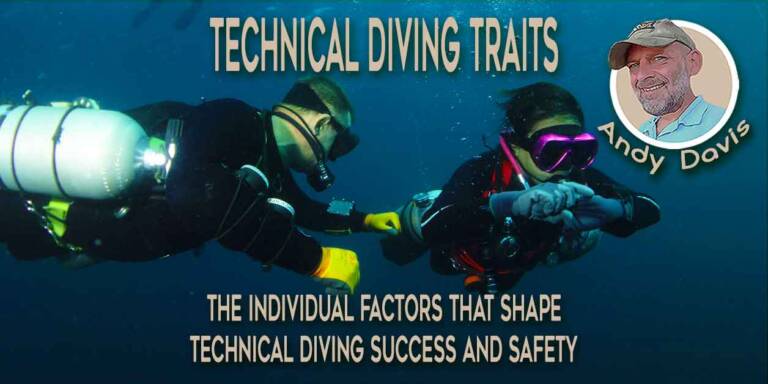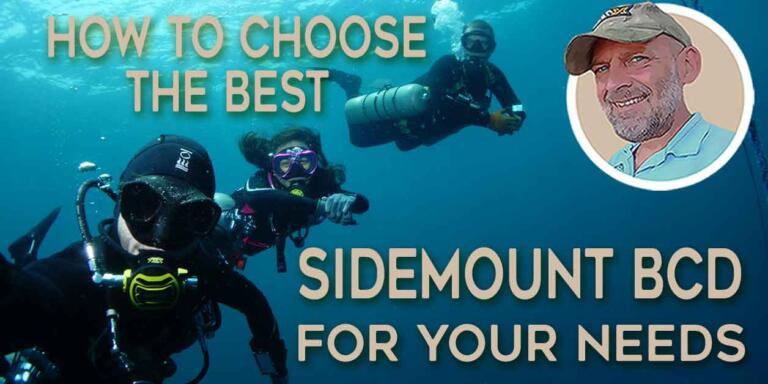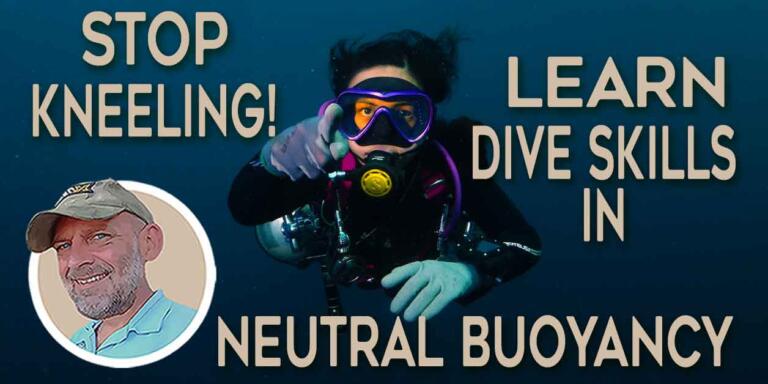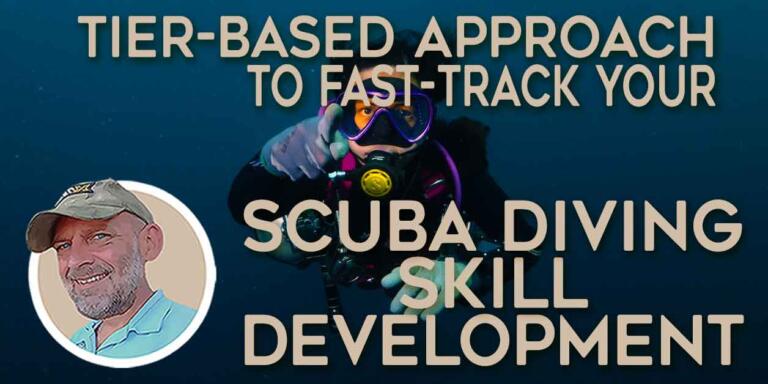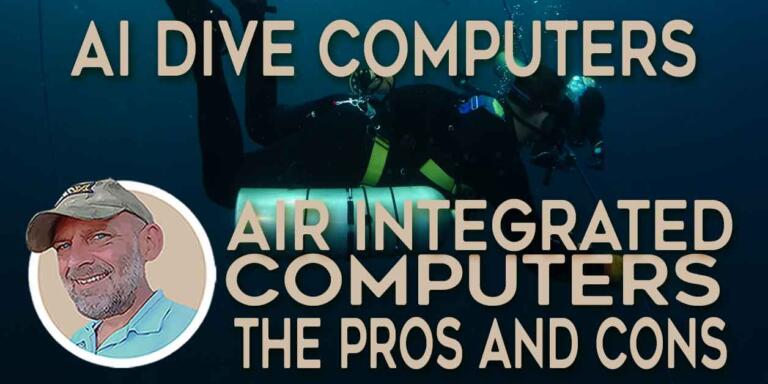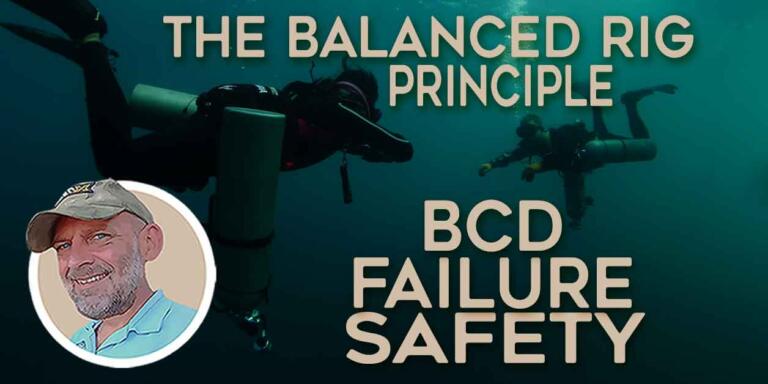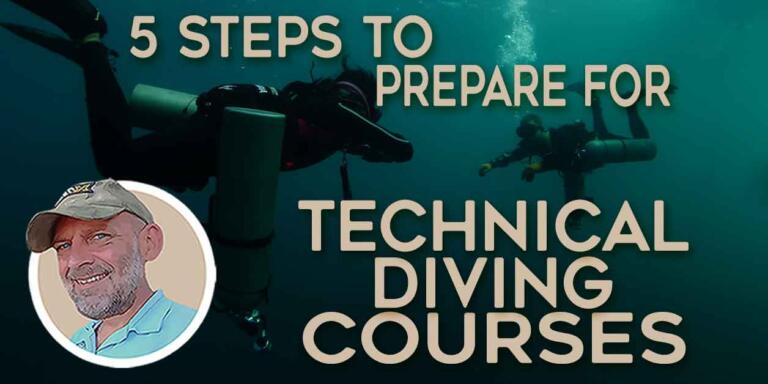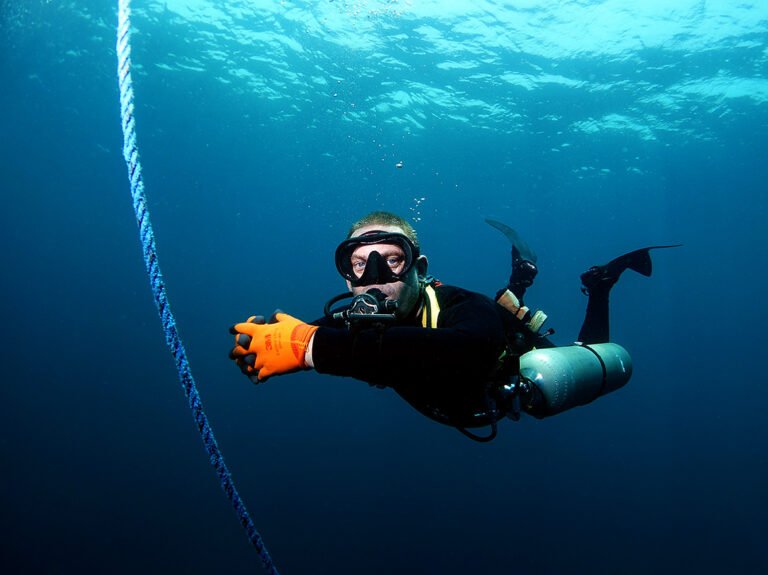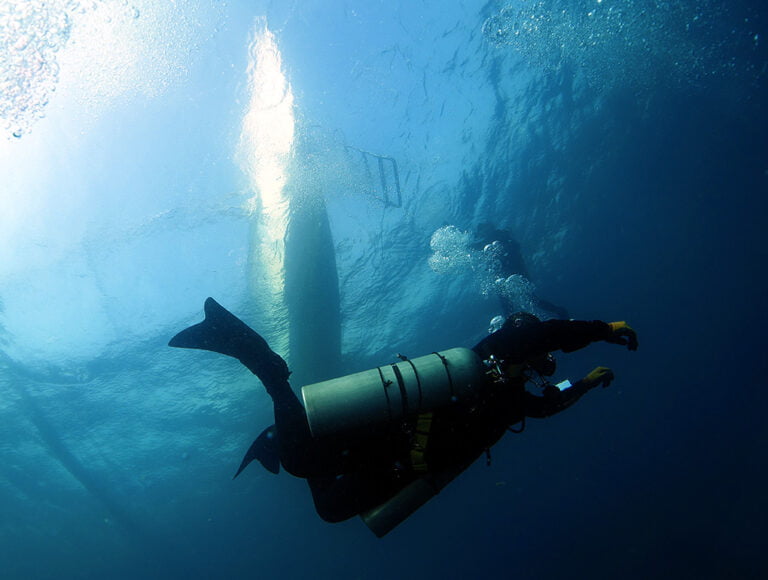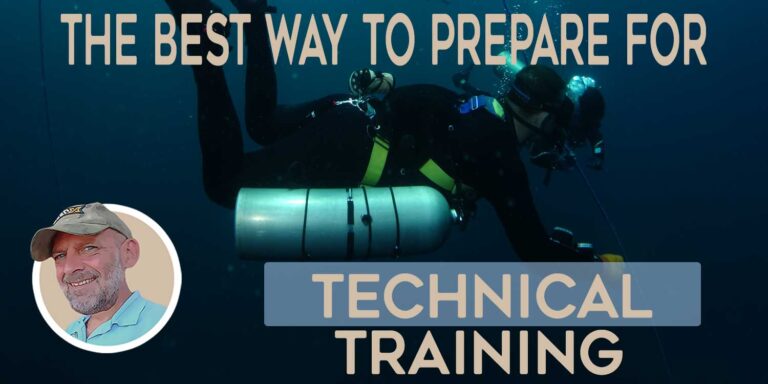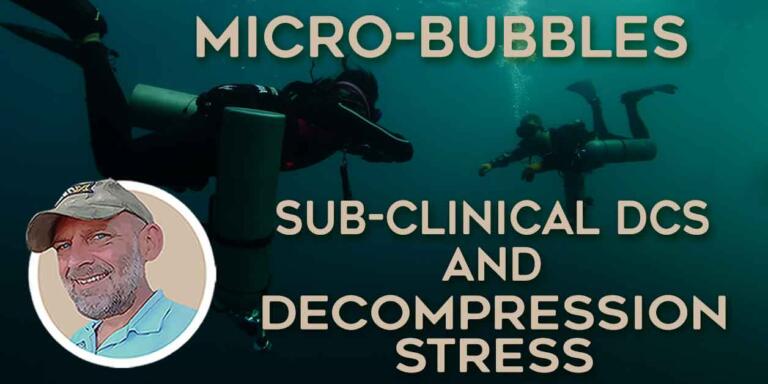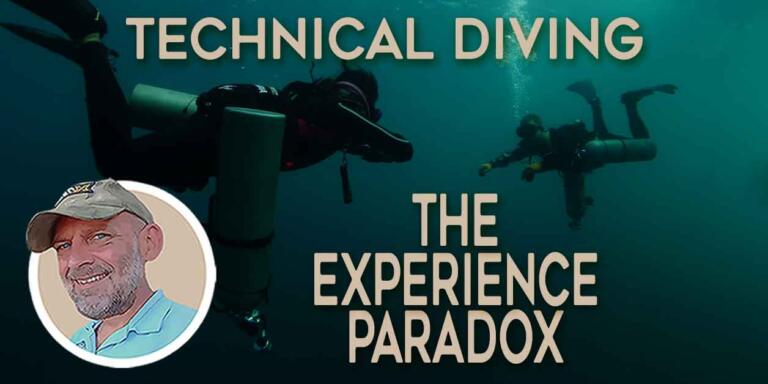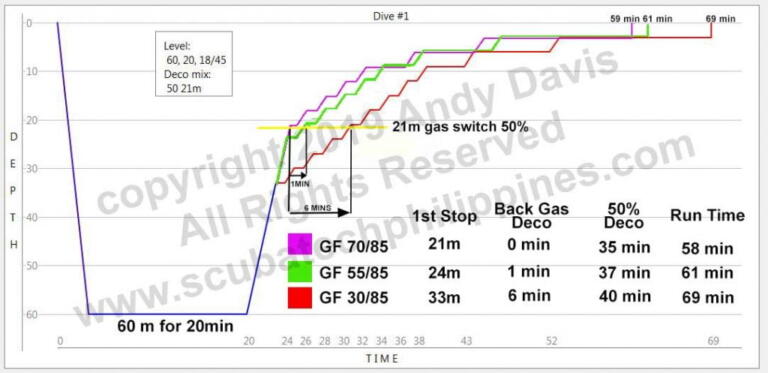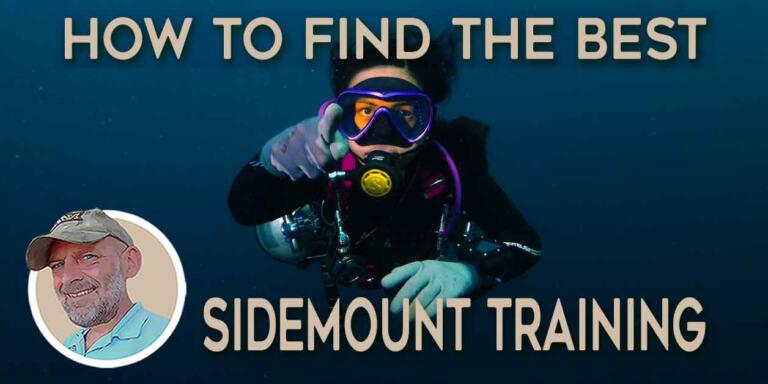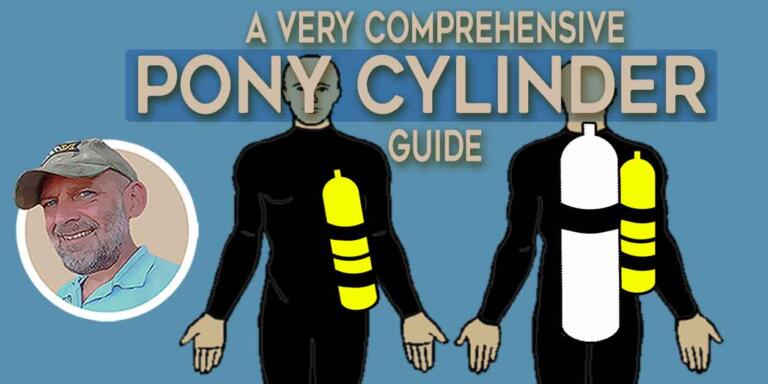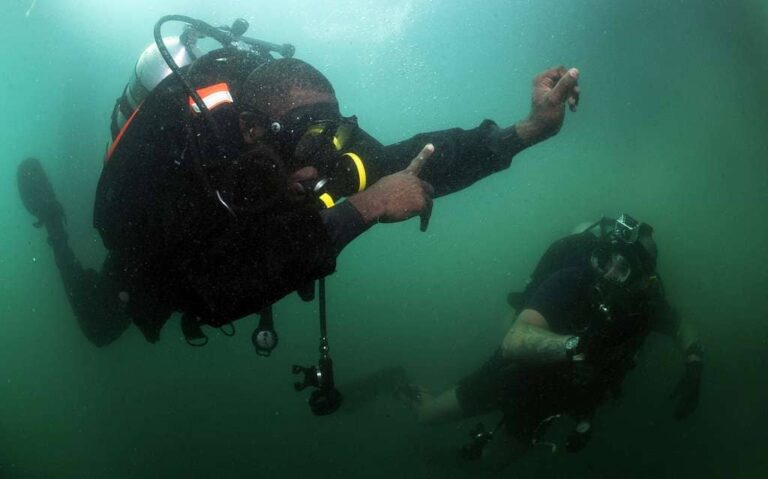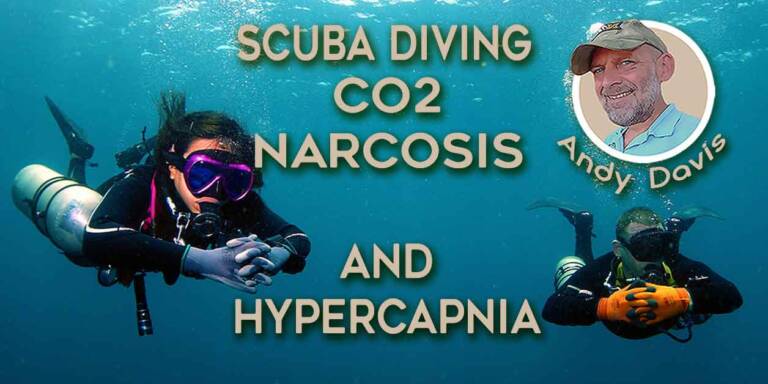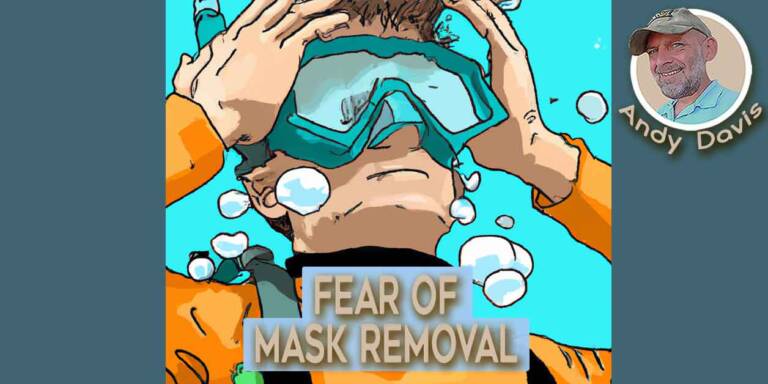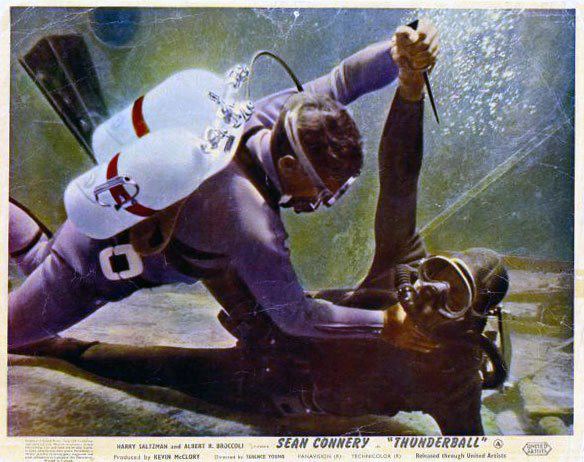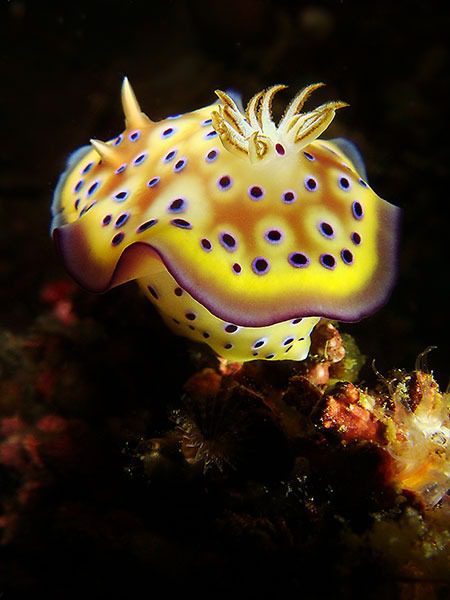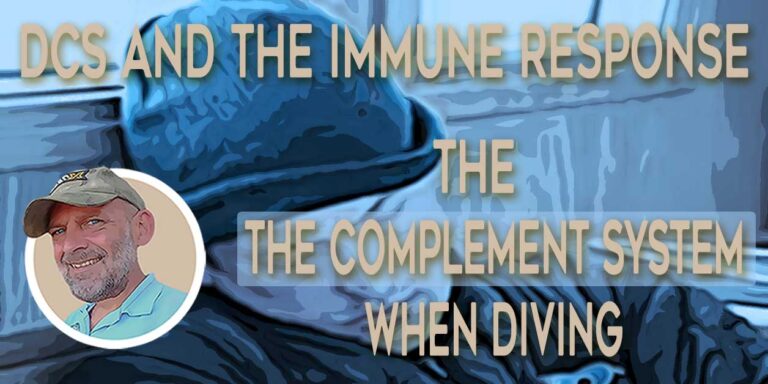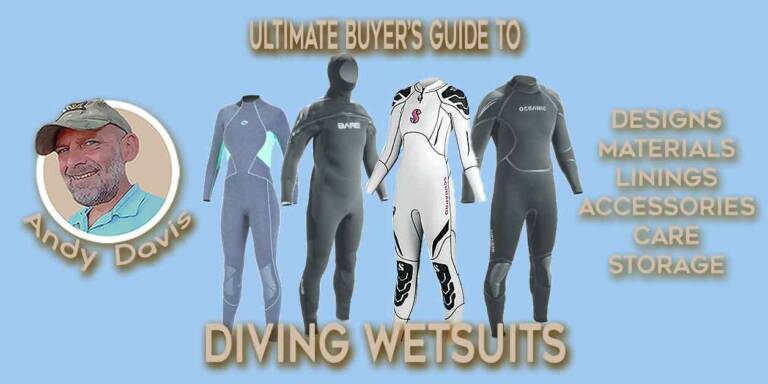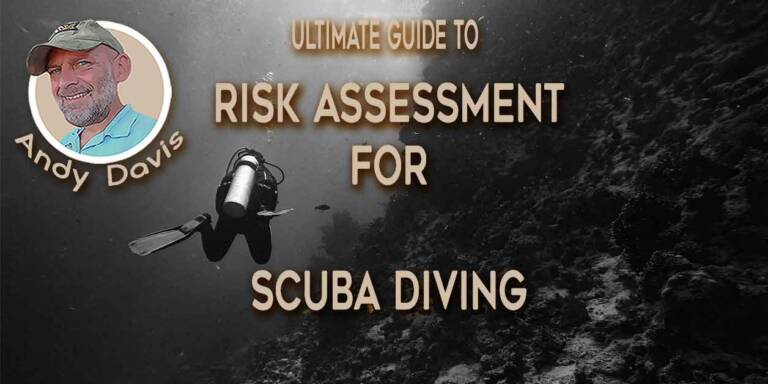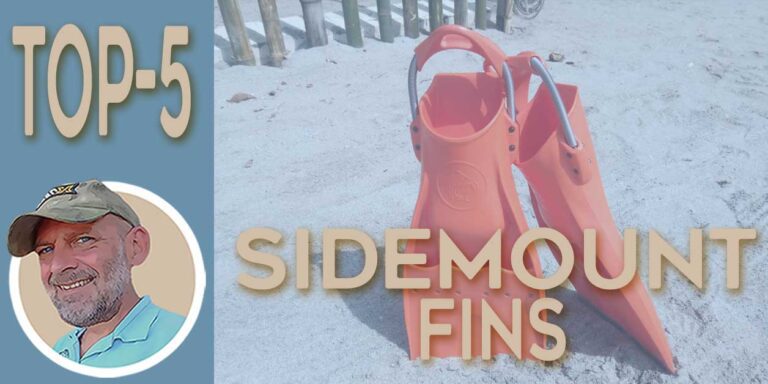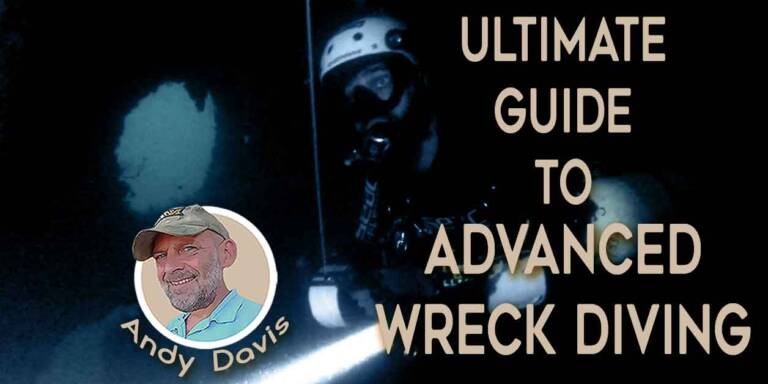
Are you underestimating your dive emergency SAC rates? Studies reveal far higher gas consumption than you'd expected!
Read MoreThe Truth About Diving Emergency SAC Rates
Don't waste time & money when developing as a technical diver. Create the best training plan to succeed in your tech diving ambitions
Read MoreTechnical Diving Development: Goal-Setting For Success!
Discover the bucket list wreck dives around the world, from the hauntingly beautiful SS Thistlegorm to the majestic shipwrecks of Truk Lagoon.
Read MoreTop-20 Best Wreck Dives in the World
The ability to horizontal hover when scuba diving is the benchmark of fundamental skills proficiency. These tips will help you master hovering
Read More10 Tips To Horizontal Hover When Scuba Diving
Safety Spool: How to configure for wreck or cave diving to be secure, yet easy to access quickly in an emergency.
Read MoreDiving Equipment: Bungee Secured Safety Spool
Learn how to select the best sidemount instructor to guarantee maximum performance & a high proficiency outcome! Don't waste money on cowboys!
Read MoreHow to Choose the Best Sidemount Instructor
Achieve effortless diving with these expert step-by-step tips. Master breathing, weighting, trim, & more. Use less gas & increase your safety!
Read MoreMaster Scuba Diving Buoyancy Control Like A Pro!
Lightweight diving fins that don't compromise on performance! Here is my pick of the best vacation travel scuba diving fins
Read MoreTop-5 Best Vacation Diving Travel Fins 2024 | Dive Gear Review
Answering the most common sidemount questions. Is sidemount...? What sidemount...? How sidemount...? A growing resource for quick answers.
Read MoreIs Sidemount …? A comprehensive FAQ Guide
Sidemount cylinder boltsnaps may seem insignificant but are critical for cylinder trim. Choose the right boltsnap with this quick guide.
Read MoreSidemount Cylinder Boltsnaps | Gear Setup Tips
Learn how to make a sidemount break away hose connector in just 4 easy steps! This DIY guide shows you how to make one cheaply!
Read MoreHow to Make a Sidemount Break Away Hose Connector
Discover the 3 types of sidemount regulator configuration. Learn the pros & cons of each setup to choose the best solution for your needs.
Read MoreSidemount Regulator Configuration
How to set up sidemount loop bungee : an illustrated step-by-step guide by Andy Davis. Take the guesswork & frustration out of kit setup.
Read MoreHow To Set Up Sidemount Loop Bungee
A new study on nitrogen narcosis challenges the long held presumption that nitrogen narcosis impairment dissipates immediately on ascent from depth.
Read MoreDoes Nitrogen Narcosis Impairment Persist?
Sidemount diving has soared in popularity since 2012, but some still debate whether it is technical level diving or exclusively suitable for only specific diving niches. Let's explore that debate!
Read MoreIs Sidemount Diving Technical Diving?
My thoughts on working as Technical Diving Instructor after two decades teaching tech, trimix & overhead diving as a full-time pro.
Read MoreWorking as a Technical Diving Instructor
My systematic method for assigning effective gradient factors settings on recreational and technical open circuit dives.
Read MoreA Logical Application of Gradient Factors for OC Tech Divers
A technical wreck course is among the most challenging courses for scuba divers. Read this descriptive account of advanced wreck training!
Read MoreTechnical Wreck Course: What Is Advanced Wreck Training Like?
The secret to improving your scuba diving air consumption explained: it's probably not what you were told! Start making a real change today!
Read MoreThe Secret To Improving Your Air Consumption For Scuba Diving
A bad dive buddy is stressful & dangerous. Follow this advice to develop a harmonious buddy system and boost your diving safety & enjoyment!
Read MoreBad Dive Buddy | How To Create A Safer Buddy System Dive Team
It's pretty easy (and cheap!) to make a DIY custom sidemount harness for yourself. Sidemount diving tips and 'how to' advice.
Read MoreHow To Build Your Own DIY Custom Sidemount Harness
Discover the impact of technical diving instructor location on your training quality. Choose wisely for the most rewarding tech diving course!
Read MoreChoose Wisely: Technical Diving Instructor Location
Does the scuba diving industry actually empower the pursuit of quality?
Read MoreThe Scuba Diving Industry: Cost Versus Quality
My thoughts and advice about attempting homemade sidemount gear projects. What does it take to create optimal DIY sidemount systems?
Read MoreBuilding Homemade Sidemount Equipment Setup
A complete guide to the history of sidemount diving: how it evolved and the principles that were shaped from differing environmental needs.
Read MoreThe History of Sidemount Diving
My thoughts on experiencing problems with sidemount skills performance; particularly fine motor movements.
Read MoreSidemount Skills: Problems With Fine Motor Movements
Nitrogen narcosis sedation is diminished consciousness: not the alcohol-like intoxication many divers are taught.
Read MoreNitrogen Narcosis Sedation & Consciousness
Technical diving valve drills can be a problem on tech courses. These top tips will help you avoid some common errors!
Read MoreTop-5 Tips to Perform Technical Diving Valve Drills
Technical diving differs from recreational scuba in many ways. This detailed article explains everything you need to know about tech diving.
Read MoreWhat is Technical Diving?
Divers often struggle with their buoyancy. These essential tips are game-changing to set you on the right path for consistent improvement.
Read More7 Diving Buoyancy Tips That You Need To Know
Uncover the contrasting views on toxic culture, elitism & clique mentality in technical diving. Is it ego and arrogance or misunderstanding?
Read MoreTech Diving: Perceptions of Toxic Culture, Elitism & Clique Mentality
The three benefits of nitrox as a breathing gas for scuba diving. Is it worth the cost of training and more expensive cylinder fills?
Read MoreWhat Are The Three Benefits Of Nitrox When Scuba Diving?
Stay hydrated, stay safe:how to prevent dehydration and DCS in diving. Explore the impact of fluid balance on decompression illness.
Read MoreScuba Diving, Dehydration and DCS
Uncover the psychology behind how failures in self-discipline occur when scuba diving. Learn about Ego Depletion & how it affects you.
Read MoreScuba Diving and Self-Discipline Failures
Why do so many scuba dive shops struggle to profit or even go bankrupt? What are the mistakes they typically make?
Read MoreThe Desperate Dive Shop
Let's take a look at diver motivations. It's easy to get side-tracked into superficial motivations. Who is the Prestigious Diver?
Read MoreAre You A Prestige Diver?
Is solo diving right for you? Explore the safety considerations. preparation & personal factors needed self-reliant underwater explorations.
Read MoreIs Solo Diving Safe?
Discover the ultimate insider secrets to finding the perfect dive center! An honest proguide on how to pick a high quality dive shop or resort
Read MoreHow to Choose the Right Dive Center: An Honest Pro Guide
Discover the importance of diving suits for underwater exploration. From material to design, learn about the key features to look for.
Read MoreThe Pro Guide To Scuba Diving Suits
This beginners guide has all the information you need for starting scuba diving & ensures you get the most out of your underwater experience!
Read MoreThe Ultimate Beginners Guide to Starting Scuba Diving
The best budget dive computers 2024. Get value for money by understanding the features & functions. Unbiased advice to help you choose!
Read MoreThe Best Budget Dive Computers For Entry-Level Divers 2024
The best liveaboards for Tubbataha Reef. A liveaboard is the only way to experience this underwater treasure; find the right one for you.
Read MoreBest Liveaboards for Tubbataha Reef Natural Park in the Philippines
Sidemount cylinder trim is a headache for many sidemount divers. This illustrated guide will help you diagnose the problem & find the solution
Read MoreUltimate Guide to Sidemount Cylinder Trim
Examining the risks & personal factors that should be considered before attempting solo diving. Read this article before you dive alone!
Read MoreAre You Ready For Solo Diving?
The Philippines is a diver's paradise, with an abundance of stunning and diverse marine life, vibrant coral reefs, shipwrecks and crystal-clear waters
Read MoreThe Best Diving Spots in the Philippines
Don't pay good money for bad training. Undertanding these factors will help you identify the best scuba diving courses available.
Read MoreHow To Find The Best Scuba Diving Course
A sidemount pouch, or pocket, is used to stow ancillary diving equipment when sidemount diving. It clips to square D-rings on the read harness via two double-end boltsnaps.
Read MoreWhat is a sidemount pouch or pocket?
Looking for the best dive boots? My ultimate guide covers all you need to know, from insulation & sizing to sole design & foot support.
Read MoreUltimate Pro Guide to Buying Dive Boots and Wetsuit Booties
If sidemount cylinder bands aren't correctly positioned you'll struggle to achieve reliable cylinder trim. This illustrated guide will help!
Read MoreUltimate Guide: Positioning Sidemount Cylinder Bands
To excel as a technical diver you need to create a feedback loop to enable continual development. This article explains exactly how to do it!
Read MorePerformance Development for Technical Divers
Buddy Separation. An effective diving safety procedure that will minimize the chance of buddy separation and missing divers underwater.
Read MoreScuba Diving Buddy Separation Safety Protocols
The benefits of streamlined dive gear and how to achieve it with your own scuba diving equipment. Small kit changes can have big effects.
Read MoreStreamlined Dive Gear: A Huge Diving Performance Boost
The balanced rig principle for diving describes a calculated approach to the amount of weight which can be jettisoned in an emergency
Read MoreThe Balanced Rig Principle For Diving
Analysis of the individual and team psychological factors defining the fatal world depth record attempt by Guy Garman (Doc Deep).
Read MoreA Fatal Attempt: Guy Garman | Doc Deep World Depth Record Fatality 2015
Looking for the best scuba diving fins? My expert guide provides valuable insights and tips to help you make the right fin buying decision!
Read MoreUltimate Pro Guide To Buying Scuba Diving Fins
End your equalization troubles! My expert pro-guide provides proven techniques & tips to allow easy and reliable diving descents!
Read MoreEqualization Made Easy: Pro Tips & Techniques for Great Diving
Discover the transformative power of flow state in scuba diving. Dive into the zone and enhance your skills like never before. Find out how!
Read MoreSublime Scuba Diving: Achieving Flow State for Divers
How to perfect your scuba weighting. Get this right & your buoyancy control will be much easier. Advice not taught in Open Water courses
Read MoreHow to Nail Perfect Weighting for Your Dive: An Ultimate Guide
Expert advice for diving ear care. Know the important differences between ear infection, waterlogged ears & muffled hearing after diving!
Read MoreTen Essential Tips For Muffled Hearing After Diving | Ear Care For Divers
Elite technical divers with positive psychopathic traits excel underwater. Discover why these adaptive traits are advantageous for divers.
Read MorePsychopathy & Technical Divers: How Adaptive Psychopathic Traits Benefit Divers
Technical diver traits have a profound effect on dive safety and skill development. Learn about these traits and how to develop them!
Read MoreTechnical Diver Traits: Understanding Personality Factors and Dive Safety
The effect of micro bubbles when scuba diving. Sub-clinical DCS may not merit a medical emergency, but should be understood and respected.
Read MoreMicro-Bubbles When Scuba Diving: Mild Bends And Sub-Clinical DCS
Advice to determine which sidemount BCD will best fit your needs as a diver. Use these criteria to choose the most suitable dive gear.
Read MoreWhich Sidemount BCD to choose?
Scuba diving skills taught in a kneeling position cause a plethora of problems for divers. Training in neutral buoyancy is very important!
Read MoreLearning Scuba Diving Skills On Your Knees
A 'how to' guide for scuba diving skill development. A systematic tiered approach to ingraining fluent & intuitive dive proficiencies.
Read MoreA Guide To Expert Scuba Diving Skill Development
DCS and the Immune System. How bubbles trigger an immune response that can make or break your body's fight against decompression sickness.
Read MoreDCS and the Immune System
Don't get gas mugged - The role of situational awareness in predicting and avoiding stressful air-sharing emergencies in scuba diving
Read MoreA Buddy System Strategy for Air-Sharing Diving Emergencies
Which is the best scuba training agency for your technical diving training? Understand the differences!
Read MoreWhat scuba training agency is best for technical diving?
Are AI dive computers a valuable investment for divers? Honest pro advice on using transmitters with air integrated dive computers.
Read MoreAI Dive Computers | Using Air Integrated Transmitters for Diving
Balanced Rig Principle: improve diving safety with a calculated approach to the overall buoyancy dynamic. Survive BCD failures without drama.
Read MoreWhat is the Balanced Rig Principle in Diving?
Decompression sickness types and symptoms. Medical catagorizations of DCS, along with sub-clinical DCS, aka decompression stress.
Read MoreTypes of Decompression Sickness (DCS)
It is vital to prepare for technical diving courses. Follow these steps for the best chance of success in your tech training.
Read MorePrepare For Technical Diving Courses | 5 Simple Steps For Success
Using your hands when scuba diving is inefficient for maneuvering. Learn how to break this habit and become a better scuba diver.
Read MoreUsing Your Hands Whilst Scuba Diving
Being able to judge your diving ascent rate is an invaluable safety skill if your computer or bottom timer fails. These tips show how!
Read MoreHow to Judge Your Diving Ascent Rate Without a Dive Computer
Improve your success in technical diving training by following these straightforward steps to prepare yourself before the course starts.
Read MoreWhat is the best way to prepare for technical diving training?
Boost competence, comfort, and confidence by learning technical diving. Discover 10 surprising benefits that raise your ability as a diver!
Read MoreTop 10 Benefits Of Learning Technical Diving
An explanation of the Scuba Gas Laws for Diving. Boyle's Law, Henry's Law, Charles Law, Dalton's Law, Oxygen Toxicity & Partial Pressures.
Read MoreThe Physics of Diving – Scuba Gas Laws Theory
Sub-clinical DCS, decompression stress and post-dive fatigue. The impact of microbubbles on diver vitality and health.
Read MoreDecompression Stress: Post-Dive Fatigue and Subclinical DCS
The technical diving experience paradox - acquiring more experience increases the opportunity for complacency to creep in & decrease safety.
Read MoreTechnical Diving Experience: The Complacency Paradox
Comparing three gradient factor settings on a 60m trimix dive plan to discuss off-gassing efficiency and DCS risk.
Read MoreGradient Factor Comparison: 60m Trimix Case-Study
Perspective on scuba world depth records: human physiology versus the limitations of diving science and technology.
Read MoreScuba World Depth Records – Science versus the Human Factor
Sidemount training varies enormously in quality. Read these tips to identify the expertise and experience you need in a sidemount instructor.
Read MoreSidemount Training: How To Find An Effective Course
A comprehensive 'how to' guide to pony cylinder benefits, selection, gas planning and usage. Everything you need to know about pony cylinders.
Read MoreHow To Use A Pony Cylinder For Diving
There are three governing factors which determine how deep can you dive using air. Understanding those factors promotes safe gas selection.
Read MoreHow Deep Can You Dive Using Air?
Should you choose your BCD or drysuit for buoyancy control? Find out the advantages and disadvantages of each option in this article.
Read MoreUsing your BCD or a Drysuit for Buoyancy Control?
Learn when to drop your weight belt to survive a scuba diving accident. Tips and advice on weight belts and technqiues.
Read MoreWhen To Drop Your Weight Belt On A Scuba Dive?
Did you know that mild CO2 retention (hypercapnia) causes acute CO2 narcosis symptoms when you are diving? Don't assume it is nitrogen!
Read MoreCO2 Narcosis and Hypercapnia When Scuba Diving
What are the pros and cons to changing to an AIR-2 regulator inflator octopus (AAS) system? What needs to be considered? Best AIR-2 systems?
Read MoreChanging to an AIR-2 Octopus AAS
The History of Subic Bay A concise history of Subic Bay, charting 500 years of turmoil, conflict and occupation The history of Subic Bay reflects many centuries of war and turbulence. The Bay has strategic significance as a protected deep-water…

Learn how to overcome fear of mask removal when scuba diving with these expert tips. Improve your skills and confidence underwater.
Read MoreHow To Overcome Fear of Mask Removal When Scuba Diving?
Understand the characteristics, benefits & drawbacks to scuba diving cylinders. This article helps you decide between steel & aluminum tanks.
Read MoreScuba Diving Cylinders: Steel or Aluminium?
This article, posted at DiveDIR, gives great advice on how to reach your valves when conducting valve shutdown procedures.
Read MoreTechnical Diving Skills | Reaching Your Valves
A re-published article discussing Sheck Exley's 'Razor' and the consideration of limits for overhead environment and technical divers.
Read MoreSheck Exley’s Razor – The Nature of Diving Limits
Anilao nudibranch: Philippines underwater photography from one of the prime muck and macro dive locations in the world.
Read MoreNudibranch in Anilao Nudibranch – Philippines Underwater Photography
The Complement System and Diving by Dr. Ernest Campbell. The role of the immune response in sub-clinical DCS & decompression stress issues.
Read MoreThe Complement System When Diving: DCS And Immune Response
Looking for the perfect scuba diving wetsuit? My buyer's guide for divers will help you learn about materials, sizes, features, care & more!
Read MoreThe Ultimate Buyer’s Guide To Choosing A Scuba Diving Wetsuit
Learn a step-by-step process for risk assessment in scuba diving and why it is vital to ensure your safety as a scuba diver!
Read MoreRisk Assessment in Scuba Diving: The Key Steps To Safer Dives
Choosing the right set of sidemount fins is an important decision. They have a profound effect on diver trim and control. With that recommendation in mind, here is my pick of the top 5 warm-water sidemount fins.
Read MoreTop-5 Best Sidemount Fins 2024
A comprehensive guide to advanced wreck diving techniques, equipment, skills and protocols. A must-read for wreck divers at all levels.
Read MoreAdvanced Wreck Diving: The Ultimate Guide
A comprehensive buying guide to the best watch sized diving computer in 2024. Explore the details & specifications to for the best informed decision!
Read MoreWhat is the Best Watch Sized Diving Computer? | 2024